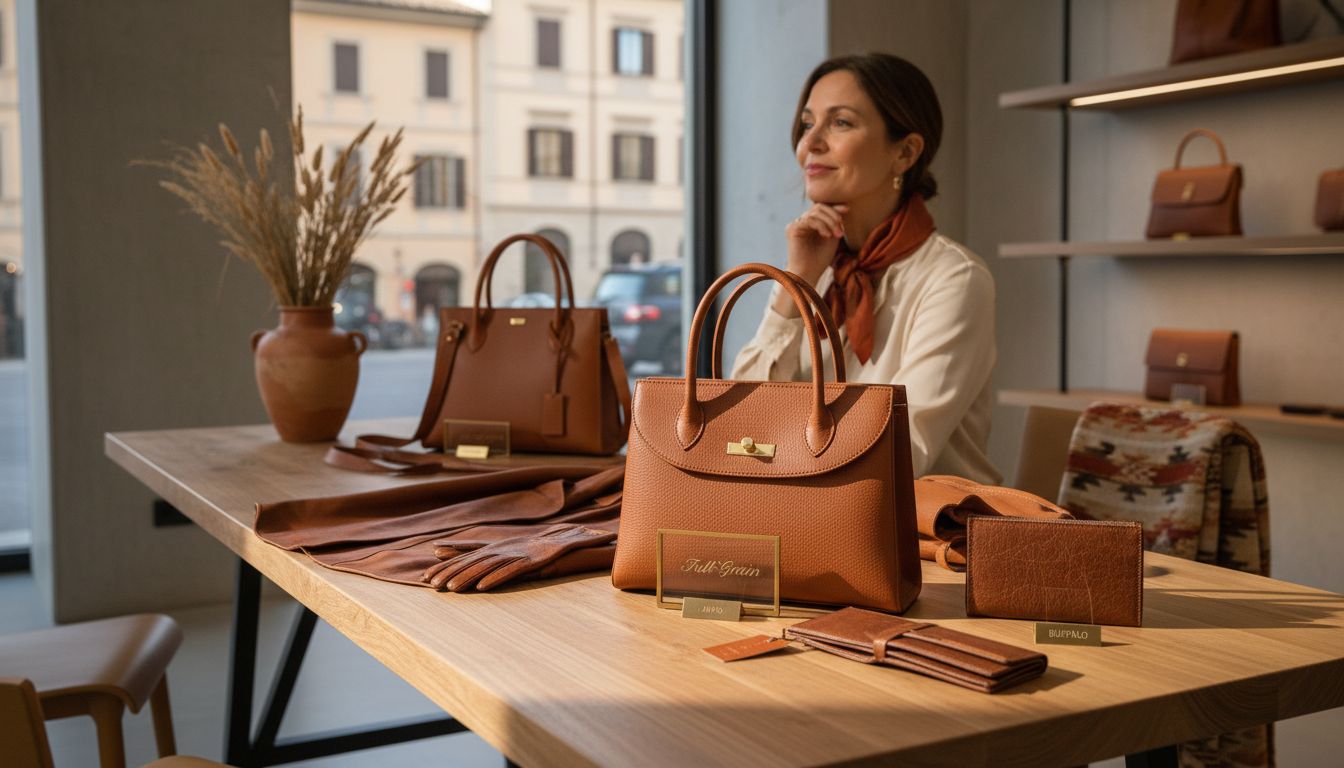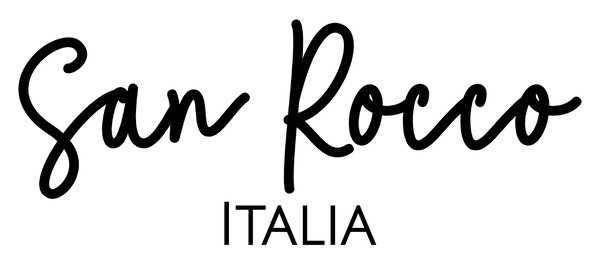
What Is Italian Leather? Complete Expert Guide
Share
Most people recognise Italian leather as a benchmark for luxury, yet few realise that its tradition is older than many british historical landmarks. The dedication to superb craftsmanship and natural materials has made Italian leather a global favourite for those who value distinction and durability. Understanding what sets this material apart helps shoppers and enthusiasts see why it remains a symbol of style, heritage, and lasting quality.
Table of Contents
- Defining Italian Leather And Its Legacy
- Types Of Italian Leather And Distinct Qualities
- Traditional Crafting Techniques And Artisanship
- How Authentic Italian Leather Is Identified
- Comparing Italian Leather To Other Alternatives
- Care, Maintenance And What To Avoid
Key Takeaways
| Point | Details |
|---|---|
| Luxury Craftsmanship | Italian leather embodies exceptional quality and artisanal expertise, making it synonymous with sophistication and durability. |
| Traditional Tanning Methods | Authentic Italian leather is primarily produced using traditional vegetable tanning techniques that ensure environmental sustainability. |
| Unique Varieties | Different types of Italian leather such as full-grain, calfskin, and Nappa offer distinct textures and qualities, suitable for various luxury applications. |
| Maintenance Essentials | Proper care requires gentle cleaning and protection from environmental factors, preserving the leather’s beauty and longevity through thoughtful maintenance. |
Defining Italian Leather And Its Legacy
Italian leather represents the pinnacle of luxury craftsmanship, embodying centuries of artisanal expertise and unparalleled quality. Originating in the rich textile regions of Tuscany and Lombardy, this exceptional material has become synonymous with sophistication, durability, and timeless elegance. Full-grain leather from Italy stands apart from other leathers through its meticulous production process, which transforms raw animal hides into sumptuous, long-lasting products.
The legacy of Italian leather traces back to medieval times, when skilled artisans in Florence and surrounding regions began developing sophisticated tanning techniques that would revolutionise leather production. These craftsmen understood that superior leather requires more than technical skill - it demands an intimate understanding of material, tradition, and aesthetic refinement. Unlike mass-produced alternatives, Italian leather is carefully selected, hand-processed, and treated to enhance its natural characteristics, creating products that improve with age and use.
What truly distinguishes Italian leather is its commitment to exceptional quality standards. Artisans prioritise using premium animal hides, typically from cattle raised in controlled environments, and employ traditional vegetable tanning methods that have been perfected over generations. This process not only produces extraordinarily supple and resilient leather but also ensures environmental sustainability. Learn more about the fascinating evolution of these techniques in our article on the history of Italian leather goods.
Today, Italian leather continues to represent more than just a material - it symbolises a cultural heritage of uncompromising craftsmanship. From haute couture fashion houses to bespoke accessory makers, these artisanal traditions remain deeply embedded in Italy’s economic and artistic landscape. Each piece tells a story of generations of skill, passion, and an unwavering commitment to creating something truly extraordinary.
Types Of Italian Leather And Distinct Qualities
Italian leather represents a rich tapestry of materials, each with unique characteristics and remarkable qualities. According to Lusso Leather, the primary varieties include full-grain, vegetable-tanned, calfskin, cordovan, buffalo, lambskin, and Nappa leather. These distinctive types offer artisans and designers an extraordinary range of textures, durability, and aesthetic possibilities, ensuring that each leather piece tells its own compelling story.
Among these varieties, full-grain leather stands as the most prestigious. Retaining the entire natural grain of the hide, it develops a beautiful patina over time and demonstrates exceptional strength. Vegetable-tanned leather represents another pinnacle of craftsmanship, using traditional tanning methods with natural plant extracts that create environmentally friendly and incredibly rich leather with deep, nuanced colours. Discover more about these fascinating production techniques in our guide to understanding how Italian leather is made.
Calfskin and lambskin offer extraordinary softness and suppleness, making them ideal for luxury fashion items like gloves, jackets, and high-end accessories. Buffalo leather provides remarkable durability and a distinctive textured appearance, while cordovan leather - traditionally made from horse hindquarters - offers unparalleled smoothness and longevity. Nappa leather, known for its supremely soft finish, represents the ultimate expression of refinement, typically used in premium automotive interiors and designer handbags.
Each type of Italian leather carries inherent qualities that reflect generations of technical mastery and artistic vision. Whether chosen for its durability, aesthetic appeal, or tactile qualities, these leathers represent more than mere materials - they are living testaments to Italy’s unparalleled craftsmanship and design heritage.

Traditional Crafting Techniques And Artisanship
Italian leather craftsmanship represents a profound fusion of centuries-old traditions and meticulous artisanal skills, where each piece is transformed through generations of inherited knowledge. According to Artigiani del Cuoio, vegetable tanning remains the cornerstone of traditional leather production, utilizing natural tannins extracted from tree bark to create exceptionally durable and environmentally responsible leather with a unique, evolving character.
The vegetable tanning process is a testament to Italian artisans’ commitment to sustainability and quality. Unlike industrial chrome tanning, this method involves immersing leather hides in large wooden drums filled with concentrated tannin extracts from chestnut, oak, and mimosa trees. This slow, intricate process can take several weeks or even months, allowing the leather to absorb natural compounds that enhance its strength, flexibility, and resistance to wear. Learn more about these fascinating production methods in our article comparing Italian leather techniques.
Master craftsmen approach leather production as an art form, carefully selecting premium hides and employing techniques passed down through generations. Hand-finishing plays a crucial role, with skilled artisans meticulously treating each piece to enhance its natural grain, correct imperfections, and develop a rich, deep coloration. This personal touch ensures that every leather product carries the subtle marks of human craftsmanship - slight variations that transform mass-produced items into unique, treasured possessions.
Beyond technical skill, Italian leather crafting embodies a profound cultural philosophy that values patience, precision, and respect for materials. From the initial hide selection to the final polishing, each stage represents a deliberate, thoughtful process where speed is sacrificed in pursuit of absolute perfection. These artisans don’t merely create leather goods - they continue a living tradition that celebrates human creativity, environmental consciousness, and the timeless beauty of expertly transformed natural materials.
How Authentic Italian Leather Is Identified
According to Lusso Leather, authentic Italian leather is distinguished by several key characteristics that set it apart from inferior alternatives. The most notable indicators include exceptional softness, remarkable flexibility, and a distinctive natural texture that evolves beautifully over time. Genuine Italian leather possesses an innate ability to develop a rich, nuanced patina - a hallmark of true quality that synthetic materials can never replicate.
Discerning leather experts employ multiple techniques to verify authenticity. Sensory evaluation plays a crucial role, with trained professionals assessing the leather’s touch, smell, and visual characteristics. Authentic Italian leather feels supple and smooth, with a natural grain that reveals subtle imperfections characteristic of genuine hide. The leather should have a distinctive, subtle leather scent - not a synthetic or overly processed smell. Explore our comprehensive guide to identifying authentic Italian leather for more detailed insights.
Additional authentication methods include examining the leather’s manufacturing origin, tanning process, and quality of craftsmanship. Genuine Italian leather typically features meticulous hand-finishing, precise stitching, and evidence of traditional vegetable tanning techniques. Experts look for specific markers such as natural color variations, subtle grain inconsistencies, and the leather’s ability to age gracefully. Counterfeit products often appear too perfect, with uniform textures and artificial-looking surfaces that lack the nuanced character of true Italian craftsmanship.
Ultimately, identifying authentic Italian leather requires a combination of technical knowledge, sensory awareness, and an appreciation for the material’s rich heritage. Consumers should look beyond surface appearances, understanding that true quality reveals itself through subtle details - the way the leather feels, how it responds to touch, and its potential to become more beautiful with age. Each piece of genuine Italian leather tells a story of craftsmanship, carrying with it the legacy of generations of skilled artisans who have perfected their craft over centuries.
Comparing Italian Leather To Other Alternatives
According to Lusso Leather, Italian leather distinguishes itself from global alternatives through its exceptional quality, traditional production methods, and unparalleled aesthetic appeal. While many leather types claim superiority, Italian leather stands out by combining high-quality raw materials with generations of refined craftsmanship that transforms ordinary hides into extraordinary products. Learn more about these distinctive qualities in our guide to understanding Italian leather benefits.
The most significant differences emerge in production techniques and material treatment. Industrial leather produced in mass-manufacturing environments typically employs chrome tanning - a faster, cheaper process that uses harsh chemical treatments. In contrast, Italian leather artisans exclusively utilize vegetable tanning, a time-honored method using natural plant extracts that preserves the leather’s inherent characteristics. This traditional approach results in more environmentally sustainable leather with superior breathability, natural color variations, and an ability to develop a rich, evolving patina that synthetic alternatives cannot replicate.
Durability and aesthetic longevity further separate Italian leather from global competitors. While many leather products deteriorate quickly, Italian leather improves with age, developing a unique character that tells a story of craftsmanship. The meticulous selection of premium hides, combined with precise hand-finishing techniques, ensures that each piece maintains structural integrity while becoming more beautiful over time. Mass-produced leathers often appear uniform and artificial, whereas Italian leather reveals subtle natural variations that demonstrate its authentic origins.
![]()
Ultimately, the comparison transcends technical specifications. Italian leather represents a cultural commitment to excellence, where each product embodies generations of skill, artistic vision, and an unwavering dedication to quality. Consumers choosing Italian leather invest not just in a material, but in a living tradition of craftsmanship that continues to set global standards for luxury and refinement.
Care, Maintenance And What To Avoid
According to the JD Institute, maintaining Italian leather requires a delicate balance of gentle care and strategic preservation. The key to extending your leather’s lifespan lies in understanding its unique characteristics and implementing a consistent, thoughtful maintenance routine. Lusso Leather reinforces this approach, emphasizing the importance of protecting these exquisite pieces from environmental challenges.
Cleaning techniques play a crucial role in leather preservation. Always use a soft, dry cloth to remove surface dust and debris, avoiding harsh chemical cleaners that can strip the leather’s natural oils. For deeper cleaning, opt for specialized leather cleaning solutions specifically designed for vegetable-tanned Italian leather. Avoid saturating the material - gentle, sparse application is key. Moisture is a significant threat, so immediate blotting is essential if any liquid accidentally comes into contact with the leather. Explore our guide to understanding Italian leather care for more detailed insights.
Environmental factors demand careful consideration when preserving Italian leather. Direct sunlight can cause irreparable damage, fading and drying out the material’s natural suppleness. Store leather items in cool, dry environments away from heat sources and direct light. Extreme temperatures - both hot and cold - can compromise the leather’s structural integrity. Use breathable fabric dust bags for storage, and consider leather conditioners that replenish natural oils every 6-12 months. Avoid plastic covers, which can trap moisture and potentially cause mildew.
Certain practices are absolute taboos for Italian leather owners. Never use hair dryers, radiators, or other direct heat sources to dry wet leather. Avoid storing items in humid environments like bathrooms or damp basements. Steer clear of silicone-based products, which can permanently damage the leather’s natural grain. Most critically, treat your Italian leather as a living material that requires respect, gentle handling, and periodic professional maintenance to preserve its inherent beauty and longevity.
Discover Timeless Elegance With Authentic Italian Leather
Understanding the artistry and legacy behind Italian leather reveals why quality and tradition matter so much when choosing leather goods. If you seek luxury handbags or accessories crafted with premium full-grain leather and traditional Italian techniques, your quest ends here. Many struggle to find leather products that genuinely age beautifully, maintain flexibility, and showcase unique natural textures that only authentic Italian leather offers.
Experience the difference that real craftsmanship makes by exploring our exquisitely made leather collection. Each piece is created by skilled Italian artisans who respect the material’s heritage and deliver not only style but lasting beauty and durability.

Elevate your wardrobe with timeless pieces from San Rocco Italia, a woman-owned boutique committed to unparalleled quality and authenticity. Visit us now at San Rocco Italia to explore our full range of luxury leather goods. Learn more about the rich traditions that inspire our collections in our article on the history of Italian leather goods and deepen your appreciation through our guide to understanding how Italian leather is made. Embrace craftsmanship that lasts a lifetime today.
Frequently Asked Questions
What is Italian leather?
Italian leather is a premium material known for its exceptional quality, craftsmanship, and durability. It originates from skilled artisans using traditional methods, particularly vegetable tanning, to transform raw animal hides into luxurious products that improve with age.
How can I identify authentic Italian leather?
Authentic Italian leather is identified by its exceptional softness, flexibility, and unique natural texture that evolves beautifully over time. It displays slight imperfections characteristic of genuine hide, and has a distinct leather scent, indicating superior quality.
What are the different types of Italian leather?
The primary types of Italian leather include full-grain, vegetable-tanned, calfskin, cordovan, buffalo, lambskin, and Nappa leather, each offering unique characteristics such as softness, durability, and aesthetic appeal, suitable for various luxury products.
How do I care for Italian leather?
Caring for Italian leather involves gentle cleaning with a soft, dry cloth, avoiding harsh chemicals, and protecting it from moisture and extreme temperatures. Regular conditioning and proper storage in breathable materials are essential to maintaining its beauty and longevity.
Recommended
- Italian Leather vs. Other Leathers: What Sets It Apart? – San Rocco Italia
- Understanding How Italian Leather is Made: A Comprehensive Guide – San Rocco Italia
- Understanding the Benefits of Italian Leather Quality – San Rocco Italia
- Why Invest in Italian Leather: Understanding its Value – San Rocco Italia


